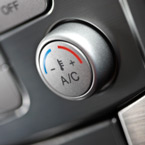 The daily morning car-warming ritual is carried out faithfully in most parts of the country from late November to early March. But is it necessary? DCH Academy Honda has the answer. The daily morning car-warming ritual is carried out faithfully in most parts of the country from late November to early March. But is it necessary? DCH Academy Honda has the answer.
The purpose of warming up your car. The main reason drivers start their car and let it idle is to warm it up by getting the oil circulating through the engine. Modern fuel injection systems, however, with the elimination of carburetors and chokes, have made engine idling unnecessary. After about 30 seconds, the oil is circulating and your car is ready to go. The Hinkle Charitable Foundation’s Anti-Idling Primer, in fact, asserts that idling forces the engine to operate in an extremely inefficient mode, which can harm the engine’s performance and lower its mileage. If you’re still skeptical, instead of idling, drive a little slower for the first mile or two.
Warming up the inside. Many commuters couldn’t care less about engine efficiency at 6:00 a.m. in the morning when it’s frigid cold. Instead, they just want a semi-warm vehicle to step into when it’s cold. However, according to the California Energy Commission, idling your car isn’t an effective way to warm up a vehicle. A more effective way to warm up your car is to actually drive it. If you really want to be on the cutting edge, electric cars allow you to pre-warm the vehicle via remote access without ever having to idle.
Idling and the environment. Still not convinced about the inefficiency of idling to warm up the vehicle? Perhaps you think engine inefficiency is a small price to pay for not freezing your fingertips when you enter your car. Maybe, a look at environmental effects will unfreeze your stance. Exhaust is harmful to human health, especially children. Certainly, exhaust is a necessary component of driving a car, but unnecessarily spewing exhaust adds to air pollution. Because idling often takes place close to curbs and sidewalks, pedestrians and children are especially at risk to the negative effects of exhaust.
The cost of idling. If air pollution and the potential harmful effects of unnecessary exhaust don’t convince you to cut down on idling, perhaps the cost of gasoline will. Idling wastes gas. Gas costs money, therefore idling wastes money — your money. Motorists are advised to turn off their engine when idling more than 10 seconds (traffic stops, excluded). You’ll save money. You’ll save the environment. You’ll save your engine. A new engine, by the way, costs money too. A lot of money.
Proper car warming procedures. Don’t stand by idly and let this information go to waste. If you’re worried about your engine’s performance, warm the car by driving it slowly. If you’re worried about being cold when you hop in the car, bundle up, start the car, adjust the radio, turn on the heat and get going.
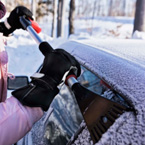 Ski trips, winter holidays and visits to Grandma’s house may have you out on the road when weather isn’t always conducive for a long, leisurely drive. Winter driving can keep you from chilling out, especially if you aren’t prepared for the trip–really prepared. Ski trips, winter holidays and visits to Grandma’s house may have you out on the road when weather isn’t always conducive for a long, leisurely drive. Winter driving can keep you from chilling out, especially if you aren’t prepared for the trip–really prepared.
Check out these tips from DCH Academy Honda that will help you enjoy your winter road trip in safety and in comfort.
Get a “well check” for your car
Getting stuck by the side of the road on a beautiful fall day may not be the worst thing that ever happens to you in life, but if the temperatures are plummeting, it’s snowing, sleeting or ice is forming, your car needs to perform like a champ, or you’re in deep trouble.
To ensure your car is road-ready and able to withstand inclement weather, bring it in to our dealership for a complete tune-up. This mechanical “physical exam” will let you know what needs to be repaired or replaced before you set out on your road trip.
Routine maintenance will alleviate the need for pit stops at out-of-state money-gouging garages or fly-by-night repair shops. It will also give you the confidence you’ve done everything necessary to ensure a safe trip for you and your passengers.
Service technicians will:
- Check your battery, cold weather is tough on batteries, and you need yours to be in tip-top shape
- Check for slow leaks, worn hoses and other needed repairs or replacement parts
- Check your windshield wipers and your window defrosters
- Check to see that your windshield-washer reservoir is filled to the top
- Check your coolant levels in your car and use anti-freeze made to withstand cold temperatures
- Check your tires and make sure they’ve got plenty of tread.
- Install snow tires if you choose to use them and make sure the tire pressure is at the optimum level
Prepare for the worst
- Charge your cell phones so you start off with a full charge
- Bring along your charger so you can keep your cell working
- Pack a bag of snacks and water bottles just in case you need them
- Pack a bag of emergency equipment like a first-aid kit, jumper cables, shovel, ice scraper, and blankets
- Plot your road trip and share the directions with another person who can help track you down if something goes wrong
- Fill up your car with gas, and don’t let it go lower than half a tank to avoid freezing gas lines
Bring along the fun
- Make up a playlist for your car so the driving time seems shorter and is more fun
- Consider bringing an audio book for the pleasure of having someone read to you while you drive
- If children are passengers, make sure they assemble a special bag that includes their favorite blankets, toys, or snacks
- Children get bored easily, so surprise them with some new games or toys suitable for a car trip
- Sweets can calm a crying child or stop the pangs of hunger; dole them out in emergencies or include them as part of your fun winter road trip.
Safe travels!
 Winter traveling—be it visiting grandma for the holidays, daily commuting, or for emergencies—can be wrought with hazards. These three mobile apps, recommended by our team at DCH Academy Honda, take some of the hazards out of winter driving, so you can feel secure as you travel. Winter traveling—be it visiting grandma for the holidays, daily commuting, or for emergencies—can be wrought with hazards. These three mobile apps, recommended by our team at DCH Academy Honda, take some of the hazards out of winter driving, so you can feel secure as you travel.
The Weather Channel. You’ll definitely want to have access to daily and hourly weather reports during the winter driving months. The Weather Channel app, available on iPhone or Android devices, provides access to all the information you might need to avoid or escape a winter storm. The Weather Channel app is convenient and unobtrusive, delivering temperature alerts displayed in a systems tray. It also offers an extensive amount of local weather information, exactly what you need for the daily commute. With extended forecasts, animated radar maps, video forecasts, detailed precipitation facts and forecasts and health and safety information, The Weather Channel has your winter driving covered.
Dark Sky. You checked out the weather forecast and it mentioned the threat of snow or tricky driving conditions, but you need to know exactly where it’s snowing at the exact location you’re driving to. The Dark Sky weather app is what you need. Dark Sky uses state of the art weather forecasting to predict rain or snow down to the exact minute at your exact location. The app ties into radar available from the U.S. government to predict precipitation hourly wherever you are. The app’s stunning radar animation lets you track the path of a storm, so you don’t get stuck in it.
Winter Survival Kit. If you find yourself stuck or stranded in severe weather conditions, your safety might ultimately depend on your smartphone. The Winter Survival Kit app will help you determine your current location, call 9-1-1, contact friends and family, calculate how long you can run your engine without succumbing to carbon monoxide poisoning and how long you can run your engine before you run out of gas. Of course, you’ll want to put together a physical winter survival kit as well. The Winter Survival Kit app will help by providing the North Dakota State University (NDSU) Extension Service information on how to put together a physical winter survival kit, how to prepare your vehicle for winter driving and how to stay safe if stranded in a winter storm.
 Your car has rearview mirrors for a very good reason. These mirrors greatly increase your visibility when driving and maneuvering your car, and without them, you could not really drive your car to any safe extent. Strangely enough, this still does not seem to deter some drivers from largely ignoring them, but as every driving instructor will tell you, using your mirror should become second nature. Here are four simple tips from our team at DCH Academy Honda to ensure that you use your rearview mirrors safely and effectively. Your car has rearview mirrors for a very good reason. These mirrors greatly increase your visibility when driving and maneuvering your car, and without them, you could not really drive your car to any safe extent. Strangely enough, this still does not seem to deter some drivers from largely ignoring them, but as every driving instructor will tell you, using your mirror should become second nature. Here are four simple tips from our team at DCH Academy Honda to ensure that you use your rearview mirrors safely and effectively.
Keep them clean. It may seem obvious, but your rearview mirrors are only useful if you keep them clean. The side-view mirrors are likely to get very dirty, especially during wet, wintry weather. Ensure that you give your mirrors a good wipe before you set out, and you might want to try keeping a packet of wipes in the driver’s door to help you remember. Even though it is inside, your rearview mirror can get grubby too, so give that a good wipe from time to time as well.
Use them all the time – even when driving straight. When you are driving in a straight line, it is easy to become complacent and to become less alert about the road. It is vital that you continue to use all your mirrors to keep a full perspective of what is going on around you. Check for vehicles approaching you from behind, so that you can see if somebody is about to overtake you, or so that you can spot any other unexpected hazards.
Keep using mirrors when passing. Some drivers will simply check their mirror once before passing, assuming that a quick glance will ensure that it is safe to maneuver. In fact, you should check your mirrors, signal that you intend to move out, check your mirrors again and only then finally pull out. Keep checking your mirrors while you are passing and then check the appropriate side-view mirror to check that it is safe to pull back in.
Use all your mirrors at roundabouts. When approaching a roundabout, many drivers focus entirely in one direction, and that is simply to check for a gap to join the roundabout. It is, however, really important to use all your mirrors. Check for vehicles in the lane beside you, particularly as the cars will be further back. If the car next to you decides to pull out, you need to be aware that it is there. Check for vehicles approaching you from behind on the roundabout and ensure that your exit really is clear before your maneuver by checking your mirrors once again.
 Bus drivers take their lives into their hands every day on city streets and interstate highways. Despite challenging traffic conditions and the responsibility of a large vehicle and numerous passengers, bus drivers find ways to stay safe while keeping up with demanding routes and schedules. These unsung heroes of the road universally command respect, but they also offer important lessons to ordinary drivers who share busy roads with buses every day. Our team at DCH Academy Honda has the details. Bus drivers take their lives into their hands every day on city streets and interstate highways. Despite challenging traffic conditions and the responsibility of a large vehicle and numerous passengers, bus drivers find ways to stay safe while keeping up with demanding routes and schedules. These unsung heroes of the road universally command respect, but they also offer important lessons to ordinary drivers who share busy roads with buses every day. Our team at DCH Academy Honda has the details.
Distracted Driving
Modern technology has caused an addiction for many bus drivers as they struggle to communicate while safely driving a bus. An Italian bus driver was caught on video simultaneously using two cell phones while steering his bus with his elbows. This talent showed the world that cell phone use behind the wheel might not present the extreme danger most people expect. Seriously, bus drivers can provide some good examples of how not to drive. Although many states have laws in place restricting the use of electronic devices while driving, many states do not. All drivers should avoid risking their lives and the lives of passengers by reserving cell phone use to emergencies while driving.
Road Rage
A New York City school bus driver named Juan DelValle side-swiped a car on a crowded city street and was subsequently attacked by the offended driver. DelValle was within days of his long-awaited retirement and died from severe injuries to his brain. This one example shows how a minor traffic incident can quickly escalate into a life-changing event for unprepared drivers. Drivers should exercise extreme caution every time they have an incident with another driver. After an accident, drivers who feel threatened can call police and wait in their cars until help arrives.
Rest
Bus drivers illustrate why no one should sit behind the wheel of a vehicle when fatigued. Investigators determined that a tour bus crash in New York that killed 15 passengers was caused by a sleepy driver. The bus driver, Ophadell Williams, was charged with criminally negligent homicide. His life might never return to its previous state. Drivers who spend time getting the sleep they need might arrive late at their destination, but they also arrive with a clear conscience, an alert mind, and living passengers.
Defensive Driving
A Transit bus in Los Osos, California rolled down an embankment after colliding with a car on a dark and wet stretch of road. Bus drivers know they cannot count on the driving skills of other motorists for safety, so they drive defensively. In the Los Osos case, the bus driver managed to stay alive after the Mercedes crossed the center line. Although the driver of the automobile died in the wreck, all the bus passengers lived. Every driver should periodically take time to review defensive-driving tactics or to attend a defensive driving class to improve their ability to respond to unexpected circumstances on the highway.
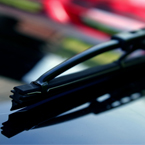 In severe weather conditions, whether or not your vehicle is safe could depend on how functional the rubber windshield wiper blades are on your vehicle. Read on to learn if it is time for you to purchase a new set of wiper blades from our team at DCH Academy Honda. In severe weather conditions, whether or not your vehicle is safe could depend on how functional the rubber windshield wiper blades are on your vehicle. Read on to learn if it is time for you to purchase a new set of wiper blades from our team at DCH Academy Honda.
When do you need new windshield wiper blades?
Worn-out wiper blades usually remind you they’re wearing out by the sound that they make. If during operation you hear an annoying “squeak” every time they “swish,” it’s time for new wiper blades. A rubber windshield wiper that’s cracked can’t keep your windshield clear during wet weather conditions and this increases your risk of having an accident. Additionally, if the rubber wears off and any part of the metal wiper hits the glass, your windshield could be damaged.
How often should rubber blades be replaced?
Inspection of your vehicle’s rubber wiper blades should be a part of every regular maintenance inspection. You don’t want to have to pull your vehicle over during a downpour or snowstorm just because you can’t see out the windows. A better strategy is to regularly check their condition and either have them replaced during a service appointment at your dealership, or change them yourself. Just be sure to check your vehicle’s operating manual for the right replacement size.
Should you replace windshield wiper blades yourself?
If you are car savvy and accustomed to doing small DIY projects on your car, changing the wiper blades isn’t a difficult task if you purchase the correct replacement. After reading the directions on the package, clean the glass windshield to remove any debris and to make the surface smooth. Replacement wiper products sometimes recommend applying glass treatment to the windshield. This step improves the effectiveness of the new blades.
What is the evolution of wiper blades?
For decades, car designs have changed radically while the standard design for wiper blades hasn’t. The first real evolution to come along beyond a single wiper blade was the two-blade design with wings during the 1980′s. Eventually, other designs incorporated even more wiping edges within one rubber strip. However, problems arose on multiple edged wipers because their design allowed too much space for ice and snow to clog the wiper action and they stopped working when drivers needed them most.
What about new contoured windshield blade designs?
Enter the contoured, frameless wiper blade. This innovative design has a benefit standard rubber blades don’t have-even pressure over the entire blade surface. When wiper blades wear evenly there’s no more premature failure of the blades due to worn edges. This design also prevents ice build-up between the rubber wiper blade and the metal frame. You don’t have to worry about them freezing if you find yourself driving in below freezing temperatures. Contoured, frameless windshield wipers are now standard on many new car models.
You don’t want to ignore this small, inexpensive item that can make a big difference when you must drive your car during bad weather conditions.
 Whether your daily commute consists of bumper-to-bumper traffic on the highway or a serene drive on the countryside, one thing we all have in common is the desire to save money on gas. Our team at DCH Academy Honda came up with these helpful tips that can not only save you money at the gas pump, but also reduce your overall fuel consumption. Whether your daily commute consists of bumper-to-bumper traffic on the highway or a serene drive on the countryside, one thing we all have in common is the desire to save money on gas. Our team at DCH Academy Honda came up with these helpful tips that can not only save you money at the gas pump, but also reduce your overall fuel consumption.
1) Utilize gas station finder apps
In just one city, gas prices can vary up to 20 cents per gallon. Save time and money with gas-finder applications, such as Fuel Finder or GasBuddy, which allow drivers to find the cheapest gas prices in their area. Not only are such apps user-friendly, many are also available for download at little to no cost.
2) Avoid extra weight
Not surprisingly, heavy loading can negatively affect your car’s overall performance. But did you know that extra weight can also affect your car’s fuel economy? According to the Department of Energy, an extra 100 pounds in your vehicle may reduce your MPG by up to 2 percent. Remove excess weight from your car or trunk to save money in the long run.
3) Take a detour
Getting from point A to B isn’t the only benefit of your GPS, as the rerouting technology standard with most systems also saves time – and gas. For instance, while stuck in traffic, the idling and constant braking wastes your car’s fuel. In such driving conditions, it is wise to deviate from your scheduled route and take advantage of your GPS capabilities to avoid wasting your gas and–ultimately–your money.
4) Use air conditioning sparingly
While that cold burst of air from your air conditioning may feel amazing on a hot summer’s day, it is also significantly reducing your fuel economy. If rolling down the windows isn’t your first choice, try utilizing your car’s air conditioning recirculation option to reduce the amount of hot air in your car and considerably save on gas.
5) Drive the speed limit
Not only is speeding dangerous, it is also hazardous to your gas tank — and your wallet. When driving at speeds above 60 miles per hour, your gas mileage rapidly decreases. According to Fueleconomy.gov, each 5 mph you drive over 60 mph is like paying an additional 24 cents per gallon for gas.
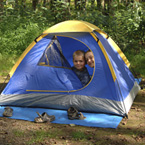 Whether you drive a modest-sized sedan or an SUV, packing your vehicle for a camping trip can create problems as you struggle to fit all the tents, food, flashlights, water, and other essentials—while still having room to fit the kids in the back. Here are a few essential tips from our team at DCH Academy Honda for packing your vehicle for this kind of trip, however. Whether you drive a modest-sized sedan or an SUV, packing your vehicle for a camping trip can create problems as you struggle to fit all the tents, food, flashlights, water, and other essentials—while still having room to fit the kids in the back. Here are a few essential tips from our team at DCH Academy Honda for packing your vehicle for this kind of trip, however.
1) Take care of safety first. Make sure there’s a fully-stocked first-aid kit in the car. Check the pressure of the spare tire. Think about keeping an extra can of gasoline in the trunk in case of emergencies.
2) Write a list. Write down absolutely everything you want to pack, and tick it off as you stow it away in your vehicle. If you’ve been sensible and written the list well in advance of the trip, you should find this methodical approach reduces the risk of forgetting any crucial items—though it might seem laborious at first!
3) Plan for the best, but prepare for the worst. If you’re going on a camping trip, you’re probably aiming to go during the summer. Obviously, pack plenty of summer clothes, sunscreen, sunglasses, and swimwear. However, never rely on Mother Nature when you’re placing yourself entirely at her mercy. Pack some waterproof clothes and thick jumpers, just in case.
4) Remember the journey. If you’re going on a camping trip, you’ll obviously be including bottles of drinking water and books and games to keep any children occupied. But remember that you’ll need these items on the journey! Even though they’re vital, don’t put them in first so they end up covered in tents and fishing rods—instead, keep them up front with the passengers. Anything that you could conceivably need while on the road, keep as cabin luggage in the car. You will probably want to make the odd stop so that everyone can stretch their legs, but having everything to hand gives you much greater flexibility in how often you need to stop driving.
5) Be creative. Optimize the luggage space in your car by thinking outside the box a little. Wear your bulkiest clothes on the days that you’re travelling. Pack items like socks inside spare pairs of shoes. Take a moment to consider which supplies you absolutely have to take with you, and which you can purchase once you’ve reached your campsite. Don’t hesitate to strap bulky equipment to the roof or to think about towing. Even a modest-sized car can transport a huge amount of cargo if you approach the task with a little imagination and flair!
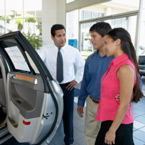 Buying pre-owned is a great way for savvy consumers to find a dependable vehicle that can last for years. We have always taken pride in the quality and value of our used inventory. Now, DCH has made it even easier to find both amazing value and peace of mind when purchasing a pre-owned vehicle. Buying pre-owned is a great way for savvy consumers to find a dependable vehicle that can last for years. We have always taken pride in the quality and value of our used inventory. Now, DCH has made it even easier to find both amazing value and peace of mind when purchasing a pre-owned vehicle.
Why is the DCH Way a better way? Unlike other car dealers who sell pre-owned vehicles “AS-IS” or “buyer beware”, DCH stands behind every pre-owned vehicle sold with either a 90-day, unlimited-mileage limited warranty or the remaining manufacturer warranty.
You won’t find any “AS IS” vehicles on our lots—only fully reconditioned, professionally inspected and quality-certified vehicles of the highest standards in the industry all with some type of warranty coverage. We stand behind what we sell and make it our mission to deliver customer happiness in everything we do.
We carry three levels of used vehicles to fit your needs and your budget, and while every vehicle we sell is quality-inspected, reconditioned, and comes with a 5-day money-back guarantee or exchange, there are varying levels of warranty coverage based on each class explained below.
DCH Certified Vehicles must pass our comprehensive 125-point quality inspection and include a 90-day/unlimited-mileage $0-deductible platinum warranty along with a complementary 12-month membership to our best-in-class Motor Club. Our Motor Club membership includes 24-hour roadside assistance, towing service, emergency lockout protection, key fob replacement insurance and more.*
DCH Value Vehicles are higher-mileage, older vehicles that must pass a rigid 60-point quality inspection and include a 90-day/unlimited mileage powertrain warranty along with a complementary 12-month membership to our best-in-class Motor Club. Our Motor Club membership includes 24-hour roadside assistance, towing service, emergency lockout protection, key fob replacement insurance and more.*
Manufacturer Certified Vehicles have undergone a rigorous multi-point quality inspection by highly trained technicians according to the manufacturer guidelines and include varying degrees of warranty coverage and other inclusions per the manufacturer program guidelines
We are so confident in the quality of our pre-owned vehicles that each and every unit we sell comes with a 5-day/500-mile money-back guarantee or exchange. If you are anything less than completely satisfied with your purchase, bring it back to our dealership and we will help you find a new vehicle that you love—or provide your money back.
At DCH Academy Honda, we are committed to the DCH Way of providing customers a fantastic car buying experience that they can’t find anywhere else. We know our pre-owned vehicle program is the most comprehensive in the industry, and we’d love to share it with you. Call, click, or visit us today to learn more.
*See actual program guide for details.
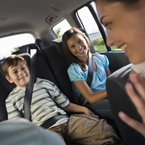 Road trips don’t have to be dull, and kids don’t have to spend every minute playing video games or watching movies to stay entertained. Instead, stretch your mind and enjoy some friendly bonding time with a few classic travel games. Here are ten fun games to play on a road trip, from our team at DCH Academy Honda. Road trips don’t have to be dull, and kids don’t have to spend every minute playing video games or watching movies to stay entertained. Instead, stretch your mind and enjoy some friendly bonding time with a few classic travel games. Here are ten fun games to play on a road trip, from our team at DCH Academy Honda.
1. The License Plate Game — There are many variations, but the goal of the basic license plate game is to spot plates from the 50 states. Make a list as you see license plates from different states, or start with a pre-printed list and check them off as you go.
2. License Plate Phrases — Call out the letters on a passing license plate and come up with funny phrases that fit the letters. For example, “HJB” could be “high jumping bears” or “holly jolly bus.”
3. Travel Scavenger Hunt — Make up a list of things you may see while traveling and check off the items you find. You can also find a list of items online before your trip. Whoever finds the most wins.
4. Travel Bingo — Make car travel bingo cards using commonly spotted objects in place of the usual bingo numbers, or buy cards with sliding covers to mark each spot. You can play regular bingo or other variations like four corners, whole card or postage stamp.
5. Common Cars — Everyone picks a type of car before the trip and counts up the number they see while traveling. The one who finds the most of their car type wins. It helps to keep a running tally sheet.
6. Packing for a Trip — Start with the letter A and take turns going through the alphabet to name crazy items you would pack for a trip. The catch: each person has to name all of the previous items and their new one. The first one to incorrectly name a previously mentioned item or repeat an item loses. Keep going until only one person can correctly name all the previous items and one new one.
7. Quick Categories — Pick a category (animals, cities, flowers, etc.) and see how many items each person can come up with in two minutes. The one with the highest number wins.
8. How Far is It? — Spot an object in the distance that you will drive past, like a bridge or large sign, and have everyone guess how far it away it is. Use the odometer to see whose guess was the closest. To play this game safely, have the person in the passenger seat (not the driver) watch the odometer, or make your guesses in seconds and count it out.
9. The Alphabet Game — Choose a broad category (food, colors, etc.) and take turns going through each letter of the alphabet to name an item that fits the category. The first person who can’t think of an item that fits their letter loses.
10. Who Am I? — One player thinks of a person who everyone knows and gives a clue to describe him or her. Everyone else guesses who is being described. New clues are added until someone guesses correctly.
|
 The daily morning car-warming ritual is carried out faithfully in most parts of the country from late November to early March. But is it necessary? DCH Academy Honda has the answer.
The daily morning car-warming ritual is carried out faithfully in most parts of the country from late November to early March. But is it necessary? DCH Academy Honda has the answer.











